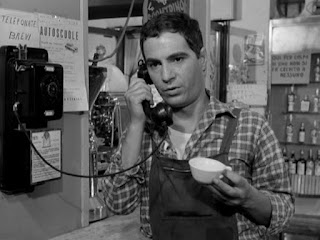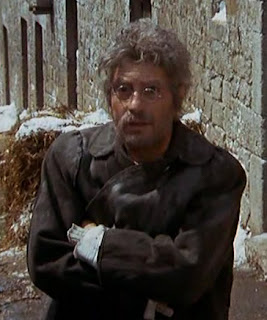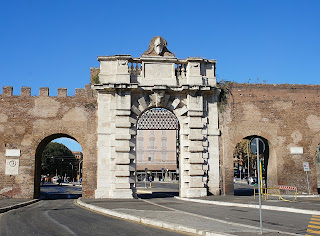Italy’s all-time top selling female artist
 |
| Mina openly smoked cigarettes in what was considered at the time to be a defiant gesture |
The pair worked together on one of Italy’s biggest-selling albums of all-time in 1998. Mina Celentano sold an impressive 2.365 million copies. They revived the collaboration in 2016 with Tutte Le Migliori.
Mina also enjoys an iconic status in the history of female emancipation in Italy as a result of the sensational ban imposed on her by the state television station RAI in 1963 following her affair with a married actor, Corrado Pani, by whom she became pregnant.
Despite pressure from the Catholic Church, whose position as the guardians of Italy’s public morals was still very strong at the time, the broadcaster was forced by the weight of public opinion, as well as Mina’s unaffected record sales, to rescind the ban the following January.
Mina, who had already cultivated a racy image by dressing in mini-skirts, dying her hair blonde and wearing heavy eye make-up, responded by singing songs with controversial lyrics, some glorifying smoking, which was still associated with women of loose morals in Italian society, and the pleasures of sex.
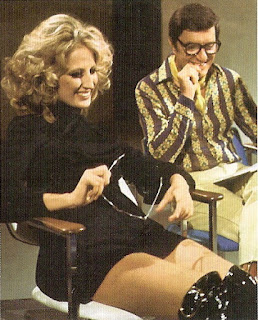 |
| Mina wore short dresses, heavy eye make-up and dyed her hair blonde during the 1960s |
Born into a working-class background in Busto Arsizio, she grew up in Cremona, where she cultivated a taste in American rock and roll and jazz music. She began to attend clubs in Milan in her teens and began her performing career under the name Baby Gate - somewhat ironic given she was 5ft 10ins (1.78m) tall - with a backing group called Happy Boys.
That partnership broke up when her parents refused to let her skip college, where she was studying accountancy, to go on tour in Turkey, despite one reviewer describing her debut on stage in Milan as “the birth of a star”.
Baby Gate gave way to Mina as a stage name, although her high-energy rock and roll style continued. Her loud vocals earned her the unflattering nickname Queen of the Screamers, while a journalist friend in Cremona called her the Tiger of Cremona.
She found fame rapidly, not just for her sensual stage performances and striking good looks but for the range of her voice. She hit the top of the Italian singles charts for the first time in September 1959 with Tintarella di Luna (Moon Tan) and would return regularly. So far she has had 79 albums and 71 singles in the Italian charts, including 16 number one albums and eight number one singles.
Largely she is remembered for melodramatic songs of anguished love stories, although her range and versatility enabled her to achieve success in different genres as the mood took her. She won particular acclaim for her collaborations with the writers Bruno Canfora (Brava, 1965) and Ennio Morricone (Se telefonando, 1966), both of whom were asked to produce music that would showcase her range.
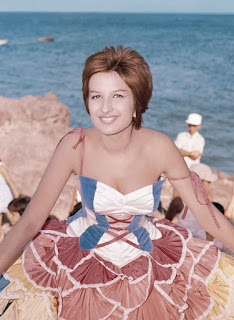 |
| Mina at the start of her career in 1959 |
She moved to Lugano in Switzerland with her father in 1966 and has lived there since, although the city is less than half an hour’s drive from the Italian border.
After Crocco’s death, Mina was romantically linked with Walter Chiara, who was her co-host with Raffaella Carrà on the TV show Canzonissima, and had relationships with the up-and-coming actor Gian-Maria Volontè and the composer Augusto Martelli. She met Quaini in 1981 and they were together 25 years before they married in 2006.
Mina decided to end her career as a public performer in the 1970s, for reasons that have never been explained, although it has been speculated that she simply tired of the spotlight. She announced her decision at the end of what would be her final TV appearance in 1974 and gave her last concert at the Bussola nightclub in Marina di Pietrasanta in Tuscany, where she had first gone on stage in 1958 during a family summer holiday.
Nonetheless, her recording career has continued unabated, with her albums now produced by her son, Massimiliano Pani. She also has a daughter, Benedetta Mazzini Crocco, who is an actress and television presenter.
| Piazza San Giovanni in Busto Arsizio, Lombardy |
Busto Arsizio is a city of some 82,000 inhabitants which lies along the Olona River about 34km (21 miles) northwest of Milan and 30km (19 miles) south of Varese. Its most notable monument is the Renaissance-style church of Santa Maria di Piazza, built between 1515 and 1523 to a design by Donato Bramante, who died before seeing the project completed. The city grew considerably in the 20th century to become an important textile centre.
Hotels in Busto Arsizio by Booking.com
Travel tip:
Part of Tuscany's Versilia coastline, Marina di Pietrasanta is a resort between Viareggio and Pisa that boasts some of the area's best beaches, stretching for five kilometres along the coast. Pietrasanta itself is a town that has been an important centre for marble extraction for hundreds of years. Look out for the Bozzetti Museum, which is dedicated to marble sculptures.
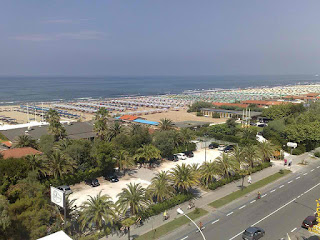 |
| The wide expanse of beach at Marina di Pietrasanta |
Part of Tuscany's Versilia coastline, Marina di Pietrasanta is a resort between Viareggio and Pisa that boasts some of the area's best beaches, stretching for five kilometres along the coast. Pietrasanta itself is a town that has been an important centre for marble extraction for hundreds of years. Look out for the Bozzetti Museum, which is dedicated to marble sculptures.
More reading:
Sixty years on stage: the extraordinary career of Adriano Celentano
Gigliola Cinquetti - Italy's first Eurovision winner
The educated Venetian girl who reinvented herself as pop star Patty Pravo
Also on this day:
1541: The birth of Francesco I, the Grand Duke of Tuscany suspected of poisoning
Home










